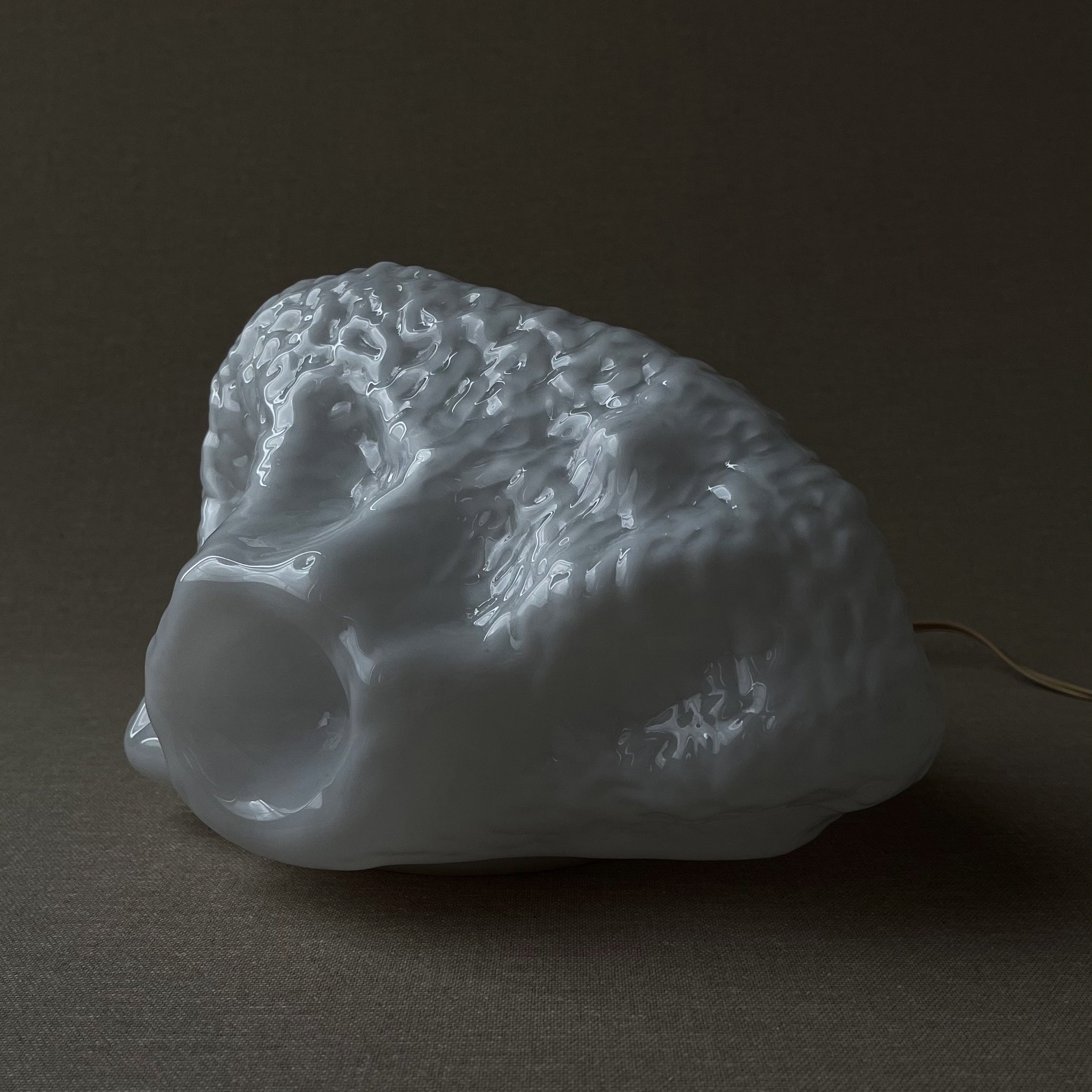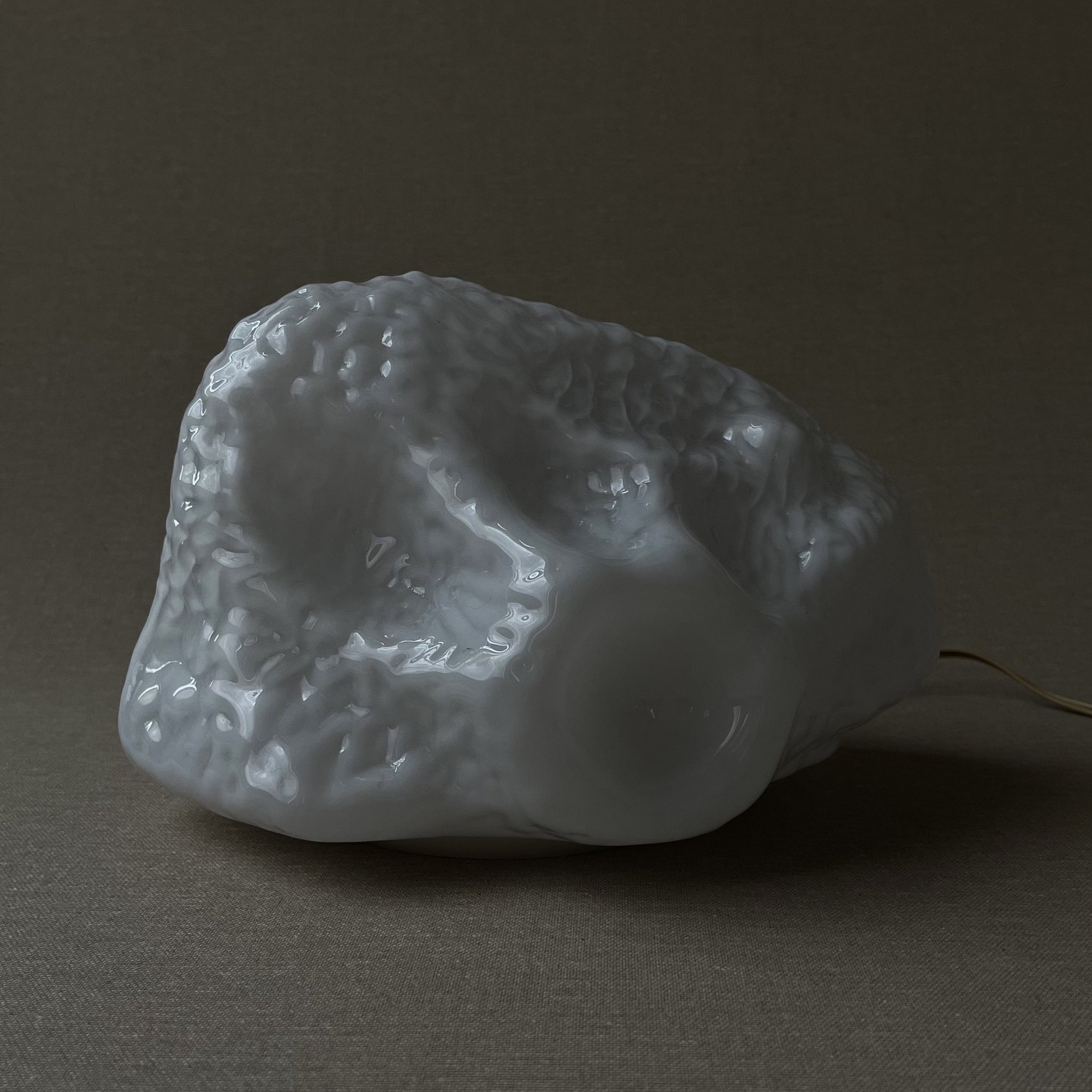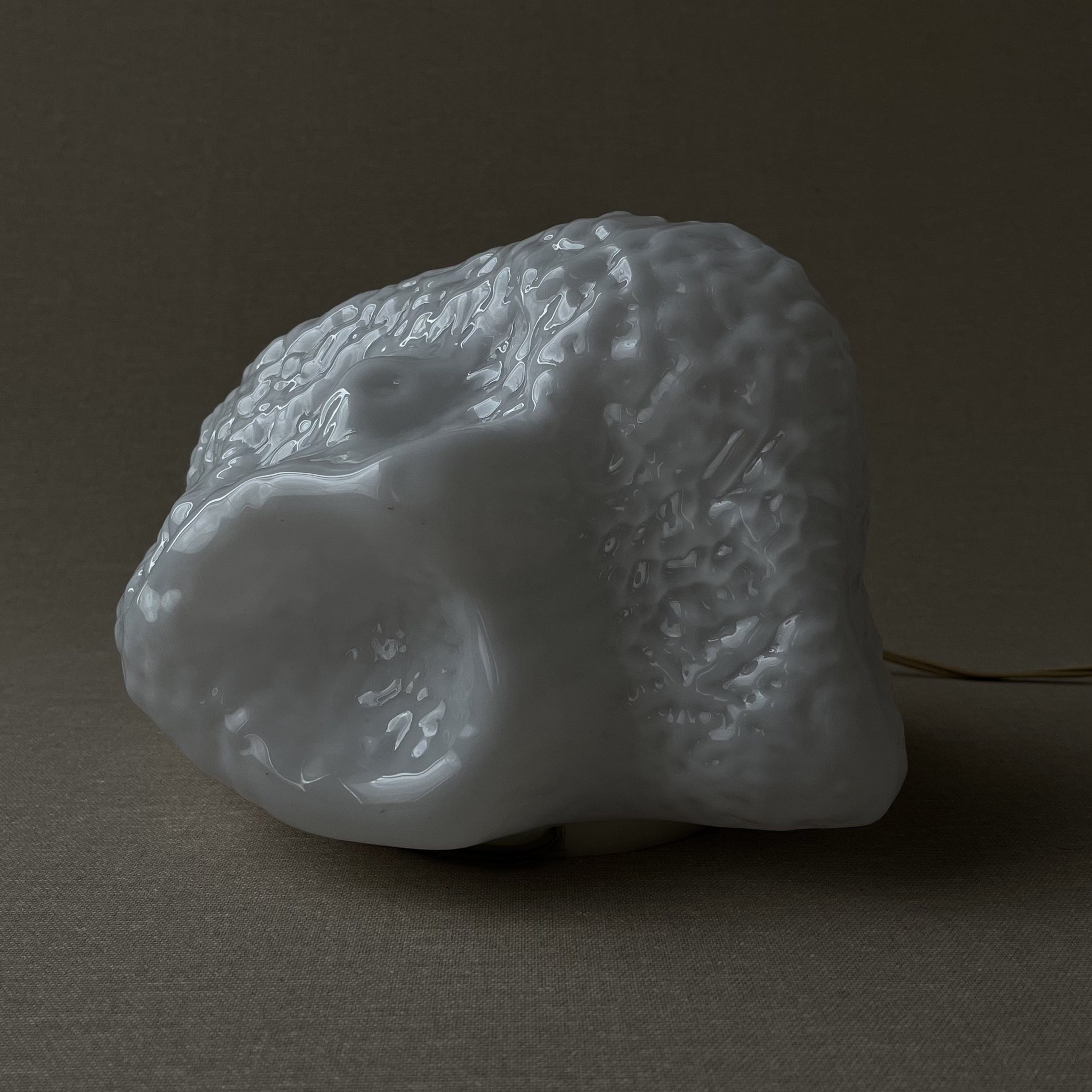Osso lamp by Carlo Nason for Mazzega, Italy, 1970s — Sculptural Murano glass light.
Part of the Luminous Narratives collection, the Osso lamp by Carlo Nason for Mazzega emerges as a luminous sculpture that transcends function. Designed in the 1970s and named after the Italian word for bone, Osso is a tactile meditation on organic form and the quiet power of material storytelling. Its structure — two thick, curved Murano glass modules fused in a soft, asymmetrical embrace — recalls vertebrae, fossils, or frozen movement. The result is an object that feels both anatomical and elemental, as if drawn from the body and the earth at once.
This is light not just as illumination, but as presence. The glass, subtly irregular and dense, diffuses a warm, inner glow that shifts with the room’s rhythm — echoing natural phenomena like ice, stone, or sediment suspended in time. Anchored by a minimal base, the form appears almost to hover, inviting the gaze to linger and the hand to reach.
As with many of Nason’s collaborations with Mazzega, Osso reflects a deep curiosity for modularity and material gesture. But here, the functional disappears behind the sculptural: this is a piece to live with, observe, and return to. A quiet monument to design as poetry — where light becomes emotion, and form becomes memory.
OBJECT SPECIFICATIONS
PRODUCT: Osso table lamp · DESIGN ICON
DESIGNER: Carlo Nasson
MANUFACTURER: Mazzega
ORIGIN: Italy
PERIOD: 1970s.
MATERIALS & TECHNIQUE: Murano glass, mouth blown
COLOR: White opaline
MEASUREMENTS: (+-) H: 16 cm, W: 25 cm, L: 20 cm
ELECTRICAL CONNECTION: original | verified | bulb E27, not included
CONDITION: Excellent condition — possible very minor wear only on the inner / socket base, consistent with age; glass remains in pristine condition.
Carlo Nason
Carlo Nason approached glass like a designer from another planet — precise, quiet, and radically modern. Born in 1935 on the island of Murano, he was raised in a family of master glassmakers, yet his vision broke with tradition. Trained in the family workshop, he explored seriality, transparency, and the structural language of light. His lamps do not merely illuminate — they inhabit space.
Most of his iconic lighting pieces were produced by Mazzega, where he helped shape a new vision of Murano. Layered opaline, smoked transparencies, and interlocking forms became signatures of his luminous universe — part sculpture, part light, part dream.
His works are in the collections of the internationally renowned Corning Museum of Glass, and The Museum of Modern Art in New York.


